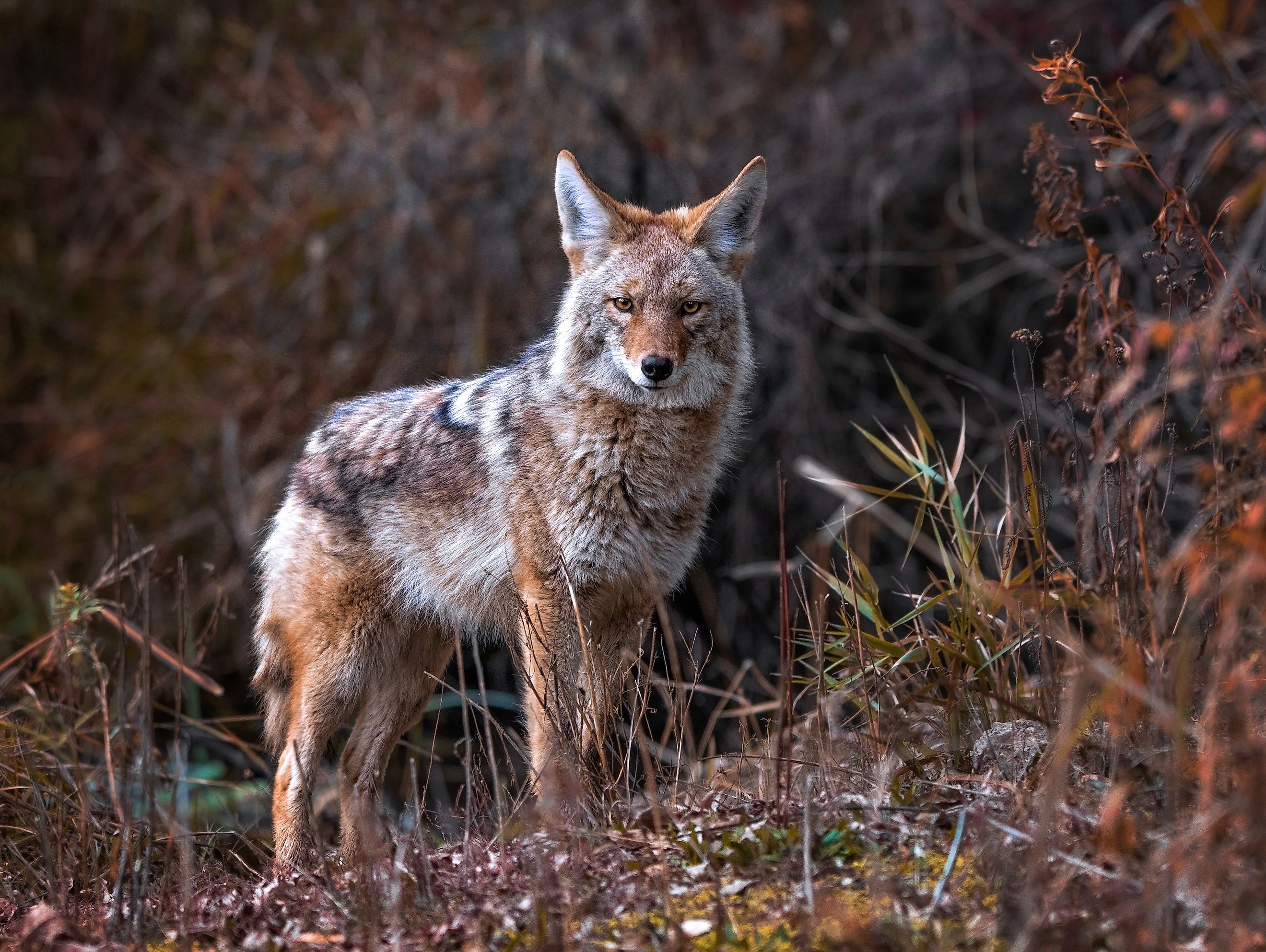
The 13 Deadliest Animals in Missouri
Missouri is a landlocked state bordered by eight other states, including Nebraska, Arkansas, Iowa, and Illinois. Known for the Missouri and Mississippi rivers, landmarks like the Gateway Arch in St. Louis, and terrains such as the Ozarks, Missouri is also home to many animals. While many of these creatures are harmless, some are dangerous, even deadly. From venomous snakes to stealthy carnivores, Missouri's different landscapes provide the perfect living conditions for these threatening species. These animals are not just a part of the state's natural beauty; some can pose significant threats to humans, making it crucial for locals and tourists to be aware of the risks and how to avoid them.
Brown Recluse Spider
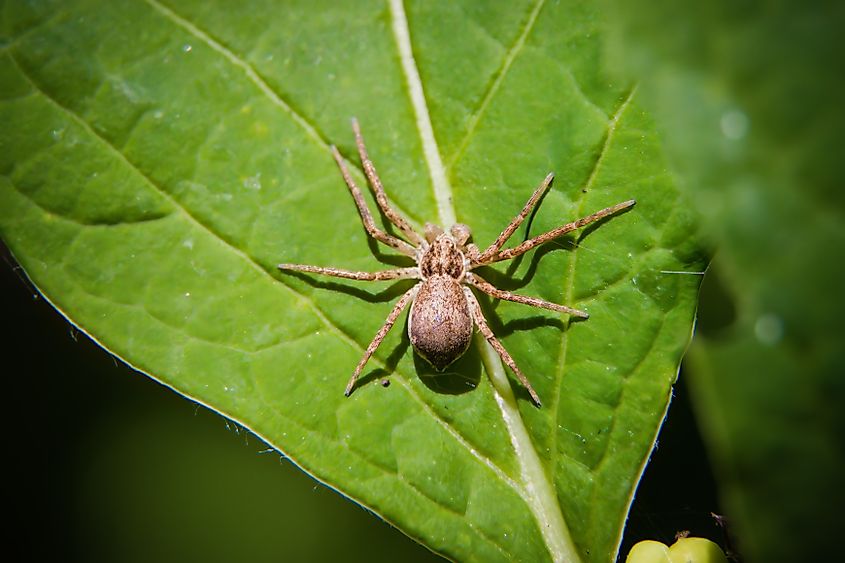
Brown recluse spiders are a solitary arachnid species that love to stay hidden, hence their name. They are small, measuring about 0.25 to 0.75 inches (6 to 20 millimeters) in length, and are identifiable by their light to medium brown color with a dark violin-shaped marking on their back. These spiders prefer to hide in basements, attics, cellars, sheds, woodpiles, and other areas with lots of cover and little foot traffic.
These spiders don't seek you out; bites are rare and usually happen when a passerby accidentally disturbs them. In most cases, bites are caused by either moving their hiding spot, leaning against them, or coming across one that has made its way into bedding. The bite from a brown recluse releases a venom that destroys surrounding tissue. To this end, it will become excruciating and may blister. Complications include necrosis, fever, chills, and nausea, so anyone bitten should seek medical attention ASAP.
Black Bears
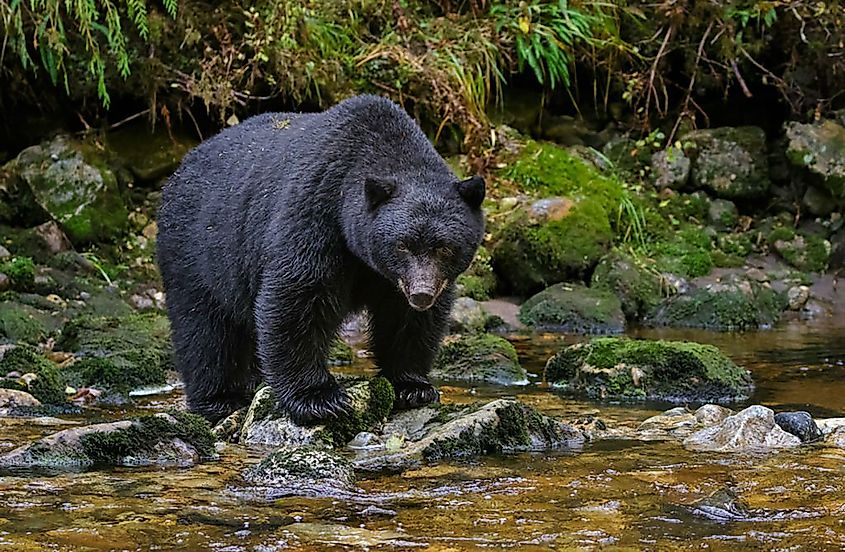
Black bears are common in forested areas, swamps, marshes, and dense regions. They can be recognized by their brown to black fur, rounded ears, lighter-colored snout, thick bodies, and stumpy legs. Black bears typically stand around 3 feet tall (90 centimeters) at the shoulder and can weigh between 200 to 600 pounds (91 to 272 kilograms), with males generally larger than females. They are omnivores and feast on berries, fish, and smaller mammals. They are also scavengers and are attracted to the smell of anything that could be edible. Consequently, it's essential to always bear-proof your belongings when in bear country, such as using bear-proof garbage bins, hanging food up high when camping, and keeping scented items in smell-proof containers.
If you encounter an aggressive black bear, try to make yourself appear bigger by waving your arms and standing tall. Shout, yell, and throw things near it to scare it off. Most of the time, they retreat unless they feel particularly aggressive or with their cubs. If scaring it doesn't work, use bear spray.
Hornets
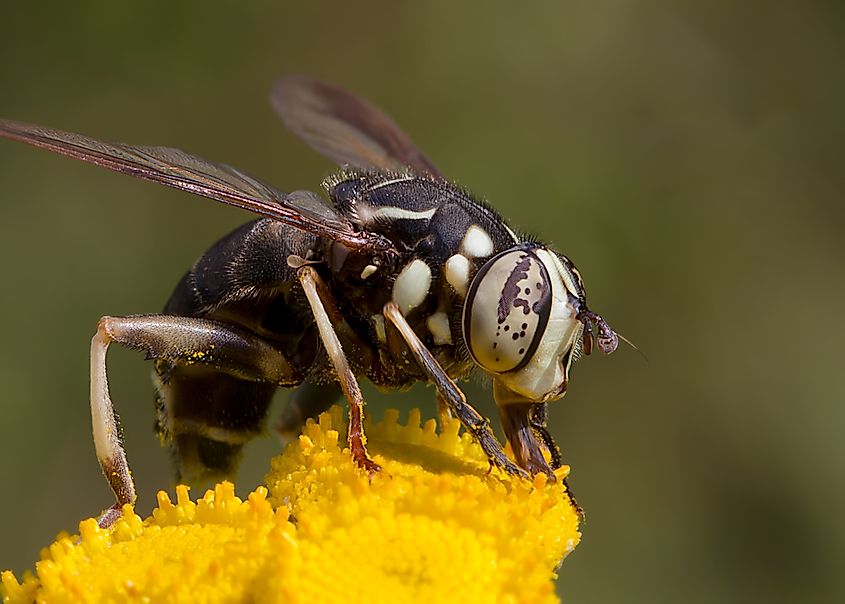
Hornets are aggressive insects that can be highly territorial and protective of their nests and queens. Typically, hornets are yellow and black or white and black, with broad heads and slender bodies. They can build their nests in various locations, such as trees, bushes, underground holes, and along the outside of homes. These nests are made from a paper-like material created by mixing wood fibers with their saliva.
Hornets live in colonies and work together to hunt or protect their nest. They are known to attack unprovoked, especially if they perceive you as a threat. Some species, like the bald-faced hornet, can even remember faces, leading to prolonged consequences. If stung by a hornet, you may experience severe pain and, in some cases, allergic reactions. To minimize swelling, keep the area elevated and avoid scratching. Watch for signs of an allergic reaction, which could lead to life-threatening complications like anaphylaxis. Thus, if you encounter a hornet’s nest, it’s best not to disturb it and instead call a pest control specialist.
Timber Rattlesnake
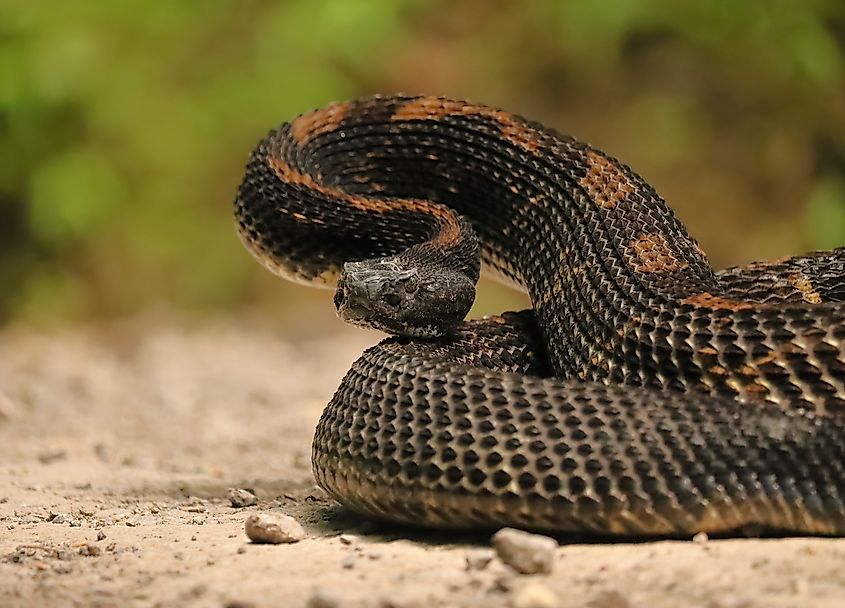
Timber rattlesnakes are pit vipers seen throughout the eastern United States. They are venomous and feature the iconic rattlesnake rattle on the tip of their tails. They typically range from 3 to 5 feet (90 to 150 centimeters) and come in brown, grey, or yellow colors with dark crossbands along their bodies. They have a robust build and can be found in forested areas, rocky terrains, and woodlands. These snakes feed on small mammals such as mice, chipmunks, rats, and squirrels, which they can sense with the heat-seeking pits on their faces.
Due to their diet preferences, timber rattlesnakes don't actively seek out humans to attack, and bites usually occur due to people not heeding their warnings, such as the rattling of their tails and the showing of the inside of their mouths. Bites can also occur when the snake is disturbed, whether they are stepped on or you stop near their hiding spot. If bitten by a timber rattlesnake, remain calm and move away from the snake to prevent further attack. Remove constricting items such as bracelets and watches, and call for emergency help. Anti-venom will need to be administered at a medical facility.
Osage Copperheads
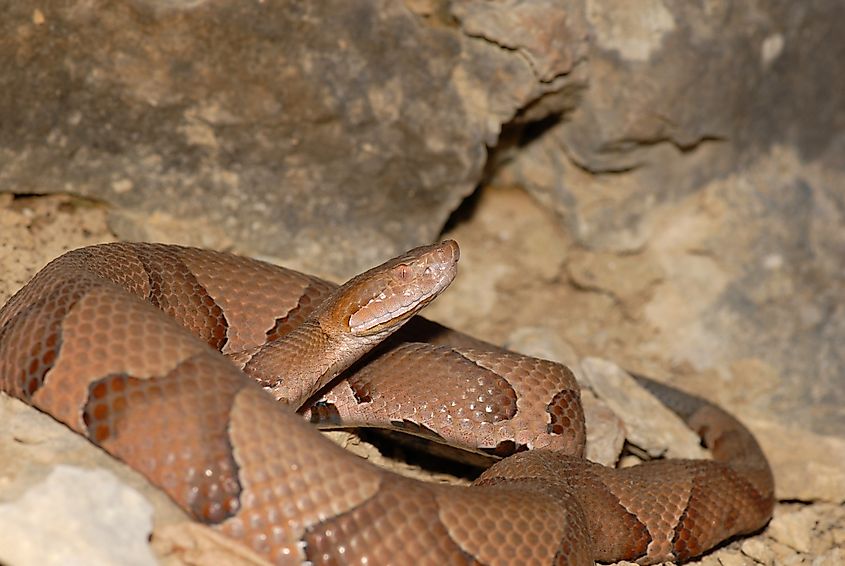
Also known as eastern copperheads, these snakes are the most common venomous snake in Missouri. They are usually 2 to 3 feet (0.6 to 0.9 meters) long and have a distinctive copper-red or reddish-brown color with hourglass-shaped crossbands. Copperheads are also known for their stout body and triangular head.
Osage copperheads are usually found in forests, rocky terrains, and near water sources like rivers, where they blend into their surroundings thanks to their camouflage. Their activity patterns vary with the seasons: they are nocturnal during the summer months, while in cooler weather, they may be more active during the day. These snakes feed primarily on small animals such as mice, amphibians, and birds.
The bite from an Osage copperhead releases hemotoxins, which destroy red blood cells and cause clotting issues. If bitten, symptoms can include pain, swelling, and tissue damage around the bite area. Immediate medical attention is crucial to administer anti-venom and minimize complications. Staying calm and keeping the affected limb immobilized can help slow the spread of the venom until help arrives.
Coyotes
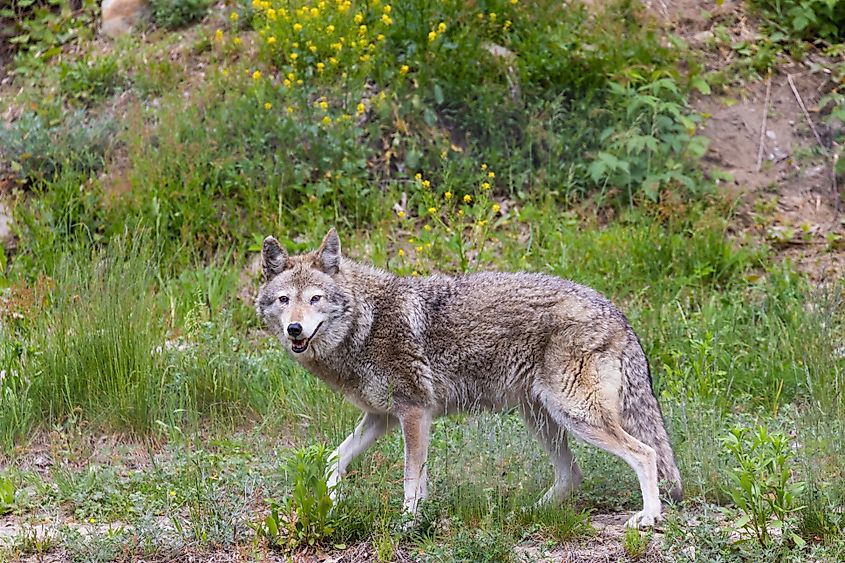
Coyotes are a member of the canine family, much like wolves, but they are far smaller and less elusive. These canines are brazen hunters that can be seen in most areas, including prairies, forests, and urban zones. They will migrate to places with abundant food sources and love eating smaller animals, such as rodents and chickens. Coyotes have also been known to go after larger prey when in groups, as well as pets like outdoor cats.
Coyotes thrive during the nighttime and can be heard communicating by yips and howls. They are fast and sneaky and can attack without warning. That said, coyote attacks on adults are rare due to size differences, though they have been known to bite at the legs of joggers or others outside. They mainly threaten small children and pets, like dogs and cats. If you encounter a coyote, make yourself appear big and make loud noises. Do not show fear; utilize whatever tactics to scare the animal off.
White-Tailed Deer
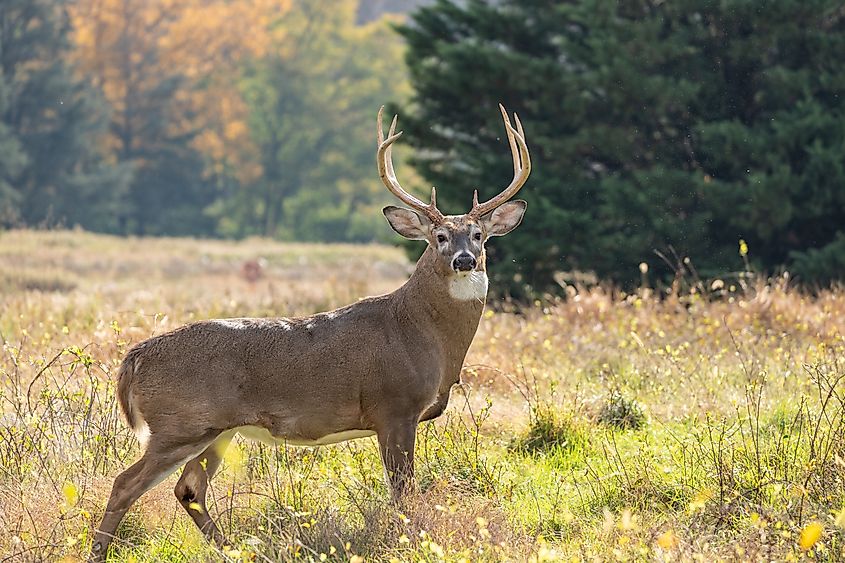
Deer are herbivores common throughout the United States. White-tailed deer range in color from reddish-brown to greyish-brown depending on the season and are known for the white underside of their tails, which is more apparent when they are alarmed. They can be seen in forested areas, prairie lands, grasslands, and farmland, where they feed on vegetation such as leaves, fruits, crops, and twigs.
Deer are considered dangerous due to the sheer amount of vehicle collisions they cause. Unpredictable, they can dart out in front of oncoming traffic with little to no warning, causing head-on accidents or damage to the sides of cars. They are known to panic when faced with these situations, especially when caught in headlights. It is imperative always to be aware of possible deer when driving, to keep an eye on the sides of roads, and to look for the reflection of their eyes at night. Be prepared to stop or slow down rapidly to minimize damage and injury. They can also cause multi-car collisions due to swerving or sudden stopping, as well as cars ending up in ditches or smashed into light posts and trees.
Ticks
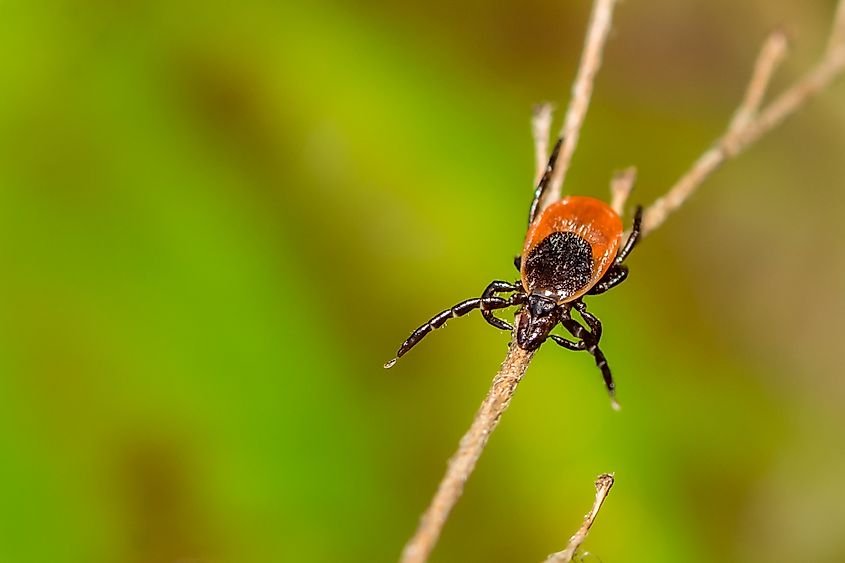
Ticks, while not inherently dangerous, carry many diseases that can cause severe complications. These tiny arachnids are usually no larger than a sesame seed, ranging from 0.08 to 0.47 inches (2 to 12 millimeters). Some common tick species in Missouri include lone star ticks, American dog ticks, and deer ticks, also known as black-legged ticks. They attach to a host passing through areas they inhabit, such as long grass, dense forests, weeds, and brush. Once attached, they feed on blood and can continue to feast on their unsuspecting victim for days.
Lone star ticks carry diseases like ehrlichiosis, heartland virus, and tularemia. Black-legged ticks can cause anaplasmosis, lyme disease, and babesiosis. American dog ticks can carry Rocky Mountain spotted fever and tularemia. These diseases can cause various problems, such as severe pain, rashes, respiratory issues, and cardiac issues. Avoid tick bites by wearing long clothing, wearing a tick repellant, and using proper footwear.
Alligator Snapping Turtle
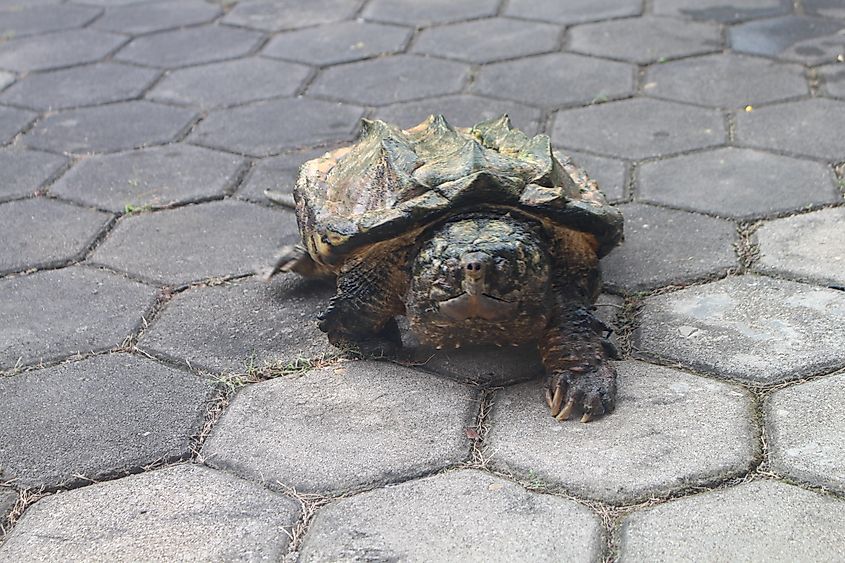
Alligator snapping turtles are among the largest freshwater turtles, with adults typically weighing between 155 and 175 pounds (70 and 80 kilograms), though some can reach up to 200 pounds (91 kilograms). They have a powerful bite and an aggressive personality. These turtles are recognized by their spiked shells, large heads, and strong hooked jaws. Found in rivers, lakes, swamps, and other freshwater sources, they feed on fish, amphibians, reptiles, and even other turtles.
They wait for the perfect time to strike, remaining camouflaged until clamping their jaws onto unsuspecting prey. With a bite force of around 1,000 pounds per square inch (454 kilograms per square inch), they can easily remove fingers and cause intense bleeding and deep puncture wounds. If bitten, get away from the turtle to avoid further bites and seek immediate medical attention to treat possible infections.
Bison
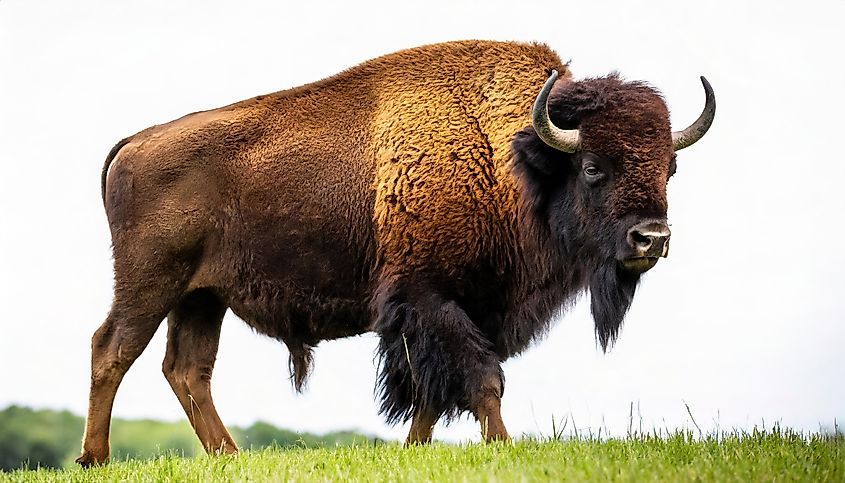
Bison are mammals with large bodies, massive heads, shaggy manes, and a distinctive hump on their shoulders. They can weigh up to 2,000 pounds (900 kg), with males being larger than females. Once a staple of the Great Plains, bison numbers drastically decreased due to overhunting, though conservation efforts have led to their reintroduction in certain areas.
Bison are herbivores that feed on grass, herbs, shrubs, and other plant life. They live in herds, which provide socialization, mating opportunities, and protection from predators. Despite their usually docile nature, bison can become dangerous if they feel threatened. They may charge at perceived threats, using their horns to gore, attempting to throw the target into the air, and stomping with their front hooves. Their horns can cause deep puncture wounds, broken bones, and internal bleeding.
Never try to take a selfie with a bison or up-close pictures. Do not approach them with the intent to pet them or feed them. If you notice the bison becoming aggressive, get away as quickly and calmly as possible, trying not to challenge them as you get an object between you, such as a fence or car.
Northern Cottonmouth
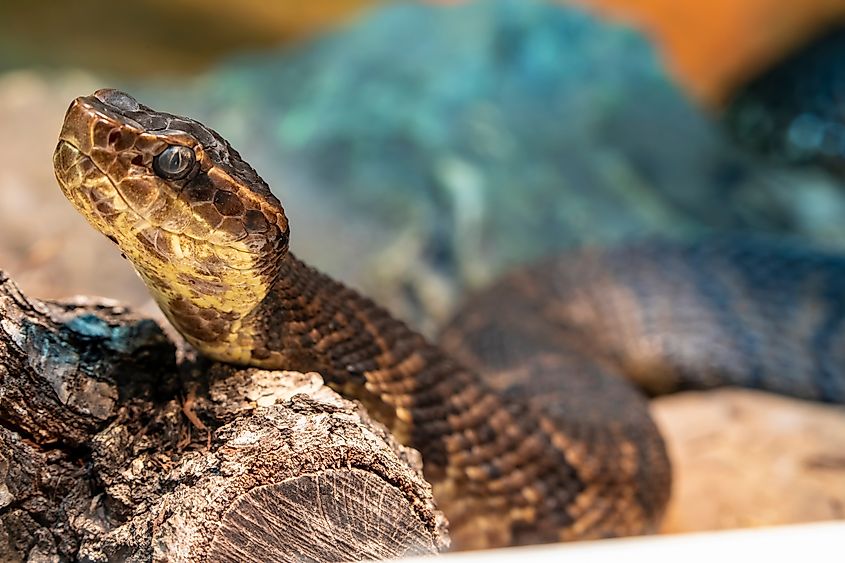
Also called water moccasins, these pit vipers are known to live in and near water sources. They typically measure 30-48 inches (76-122 cm) in length and are usually brown, gray, or black with darker bands. Their undersides are lighter in color, and when threatened, they display the inside of their mouths, which are a unique cotton-like white.
They are mainly found in swamps, lakes, creeks, streams, and wetlands, where they hunt fish, amphibians, reptiles, birds, and rodents. They are excellent swimmers, which they utilize when hunting. They do not actively hunt humans and usually give plenty of warning before deciding to strike. Watch your step in aquatic areas, and if you spot one, provide it with plenty of space.
Their venom is hemotoxic, which causes red blood cell death and blood clotting issues. Bite symptoms include severe pain, nausea, tissue damage, bleeding, and swelling. Prompt medical treatment is essential so that an anti-venom can be administered.
Bobcat
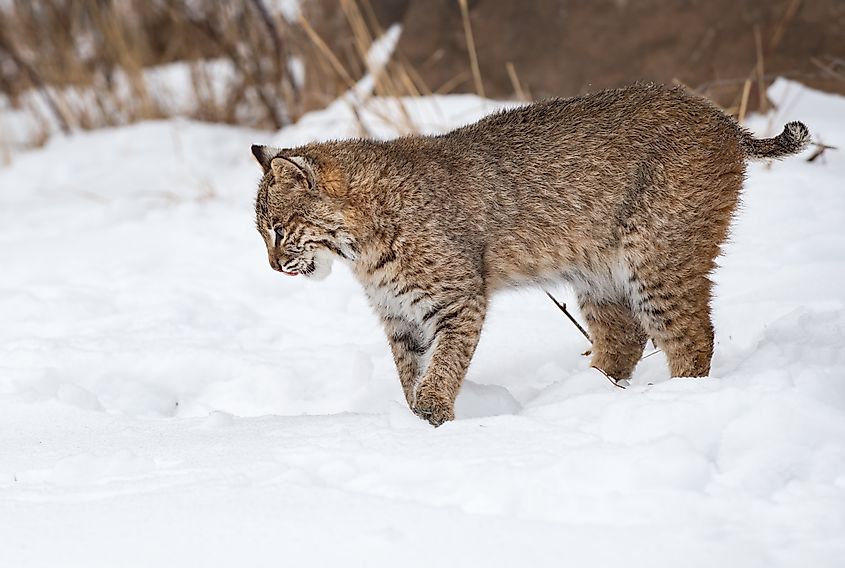
Bobcats, also called lynx, are wild cats belonging to the same family as the common house cat and cougars. They are medium-sized mammals with light grey or brownish fur, darker spots, and stripes. They have stubby tails with a black tip. They also have pointed ears with dark-colored tufts and can be found in forests, mountainous areas, grasslands, and deserts.
Bobcats are predators, with advanced hunting going after smaller mammals such as rabbits, squirrels, and birds. They will also hunt larger animals such as deer and as such, are a threat to outdoor pets. Due to their size, bobcats don't typically attack adults but can easily cause harm to a child. They may also attack a grown human if threatened or if they have become used to civilization.
Western Pygmy Rattlesnake
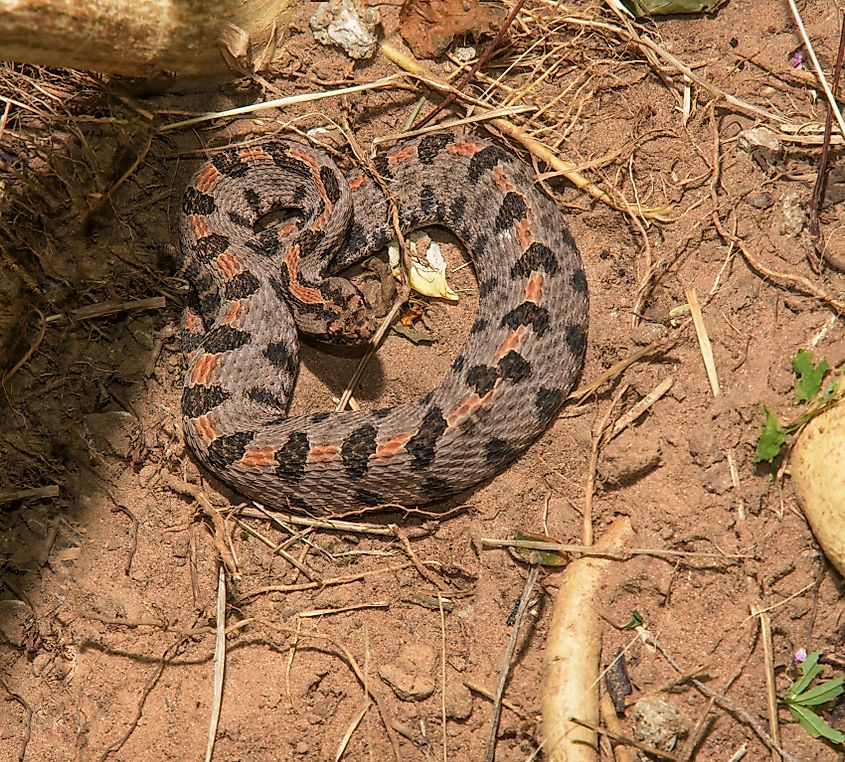
A smaller rattlesnake species, these snakes range from 12 to 20 inches (30 to 51 centimeters) in length. They range from brown to grey, with a distinctive spotted pattern that is hard to miss. These snakes also boast triangle-shaped heads and heat-seeking pits near their eyes to assist with hunting.
Western pygmy rattlesnakes live in forests, swamps, and sandy areas. They prefer to be somewhere with lots of ground cover and hiding spots, which makes it easier to prey on rodents, insects, reptiles, and amphibians. While they do not hunt humans, bites occasionally occur because the snake is threatened. As their venom is hemotoxic, leading to red blood cell loss and clotting issues a bit can cause severe pain, swelling, redness, and bruising. If bitten, seek medical attention as soon as possible to receive a dose of anti-venom.
The best way to avoid being bit by these rattlesnakes is to heed their warnings, such as the rattle of their tails and the showing of their teeth. Be aware of where you are stepping, and don't mess with potential hiding spots such as debris piles and fallen logs.
Wrapping Up
No matter where you are, it's always important to be aware of the wildlife around you. Familiarize yourself with potential threats, whether avoiding conflicts with predators, not disturbing the hiding spots of venomous creatures, or being road-safe in case of deer crossings. Know your options regarding medical services, including the numbers to call and the nearest facilities. Pack smart, bringing bear spray, a cellular device, and a first aid kit. And as always, obey posted signs and listen to state-issued warnings and information.











